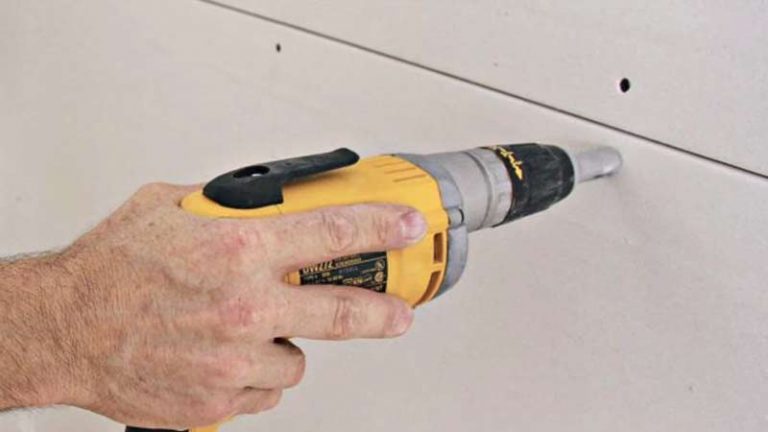How to Cover Exposed Romex: The Ultimate Safety Guide
Exposed Romex wiring is a common sight in many homes, especially in unfinished areas like basements, attics, or during a remodel. While it might seem harmless, leaving these electrical cables unprotected is a serious safety hazard and a violation of most electrical codes.
This guide will walk you through why you must cover exposed Romex and provide detailed, actionable solutions to fix the problem safely and effectively.
You'll Learn About
Why Exposed Romex Is a Serious Hazard You Can’t Ignore
Many homeowners underestimate the danger posed by exposed electrical wires. Understanding the risks is the first step toward creating a safer home environment.
Left uncovered, Romex is vulnerable to damage that can lead to electrical shocks, arc faults, and potentially devastating fires.
The Dangers of Physical Damage
Romex wiring consists of insulated conductors bundled inside a flexible PVC (plastic) sheathing. While this sheathing offers basic protection, it is not designed to withstand physical impact, abrasion, or pests.
A stray nail, a curious pet, or even the process of moving stored items can easily compromise the sheathing, exposing the live wires within and creating an immediate shock or fire risk.
Code Violations and Home Insurance
The National Electrical Code (NEC) has strict rules about protecting non-metallic sheathed cables like Romex. Exposed wires in high-traffic or vulnerable areas are a clear violation that will fail a home inspection.
Furthermore, in the event of an electrical fire, your homeowner’s insurance claim could be denied if the cause is traced back to improper and non-compliant wiring.
First Steps: Assessing Your Exposed Wiring Situation
Before you can choose the right solution, you need to assess where and how the Romex is exposed. The method you use will differ greatly between an unfinished basement and a finished living room.
Always begin by turning off the power at the circuit breaker that supplies the wire. Confirm the power is off using a non-contact voltage tester before touching any wires.
Exposed Wires in Unfinished Spaces
In areas like unfinished basements, garages, and attics, Romex is often run along ceiling joists or wall studs. While common, it still requires protection, especially if it’s below a certain height or in a location where it could be damaged.
The primary goal here is protection rather than aesthetics. You need to create a physical barrier to prevent accidental contact or damage. This is especially true in a garage where you might use an insulation retainer clip during other projects.
Exposed Wires in Finished Living Areas
If you see exposed Romex along a baseboard, coming out of a wall, or in a closet, the situation requires a more integrated and aesthetically pleasing solution. This often happens after removing a cabinet or during a minor renovation.
Here, the goal is to completely conceal the wire in a way that blends seamlessly with your home’s interior finishes, much like you’d want a clean finish after installing an electrical outlet in a custom location.
Solution 1: Covering Romex in Finished Rooms with Surface Raceway
For finished areas where routing the wire behind the drywall isn’t feasible, a surface-mounted raceway (or wire molding) is the perfect solution. It’s a plastic channel that adheres to the wall and conceals the cable inside.
This method is easy for DIYers, affordable, and provides a clean, finished look without needing to cut into your walls.

Step-by-Step Guide to Installing Wire Molding
First, measure the length of the exposed Romex and purchase a raceway kit that is large enough to accommodate the cable. These kits usually come with couplings, elbows, and other fittings for a professional installation.
Cut the raceway base to the desired length using a hacksaw. Most raceways have a self-adhesive backing; simply peel and stick the base to the wall over the wire. For extra security, use the provided screws to anchor it to the wall.
Lay the Romex cable inside the base channel. Once the cable is in place, snap the cover onto the base. The cover will click securely, completely enclosing the wire.
Solution 2: Protecting Romex in Unfinished Basements and Attics
In unfinished spaces, the NEC often requires Romex to be protected where it is subject to physical damage. A common and effective method is to use running boards or install the cable through bored holes in the joists.
If the Romex is running perpendicular across the bottom of ceiling joists, you must install “running boards” (1×3 or 1×4 boards) alongside the cable to shield it. The cable should be stapled to the side of this protective board.
When to Staple and When to Shield
If the Romex runs parallel with joists or studs, you can secure it by stapling it directly to the side of the wood framing members at intervals of no more than 4.5 feet. However, if the wire is running across the face of the studs, it needs protection.
For a home with older infrastructure, this is a good time to assess the overall electrical system. Just as you might wonder if you should replace a 30 years old water heater, you should consider if your wiring needs a broader update for safety.
Solution 3: The Professional Method of Concealing Romex Behind Drywall
The most professional and code-compliant way to deal with Romex in a finished space is to ensure it is properly installed behind the drywall. This method is more invasive and may require patching and painting, but it is the correct long-term solution.
This involves cutting small openings in the drywall, fishing the wire through the wall cavity, and ensuring it is properly stapled to studs and protected by nail plates where it passes through them.
Why This Is Often a Job for an Electrician
Working inside walls requires a clear understanding of electrical codes, from how far back the wire must be from the drywall face to when protective plates are needed. An error can create a hidden fire hazard.
For most homeowners, the cost of hiring an electrician for this task is a worthwhile investment in safety and peace of mind. The cost of electrical work is a key factor in any renovation, much like homeowners wonder will fence prices go down when planning outdoor projects.
Comparison of Romex Covering Methods
Choosing the right method depends on your specific situation, budget, and DIY comfort level. The table below breaks down the key differences between the most common solutions.
| Method | Best Use Case | DIY Difficulty | Cost | Appearance |
|---|---|---|---|---|
| Surface Raceway (Wire Molding) | Finished interior rooms (walls, baseboards) | Easy | Low | Clean and tidy |
| Running Boards/Furring Strips | Unfinished basements, attics, garages | Moderate | Low | Utilitarian |
| Conduit (EMT or PVC) | Areas with high risk of damage (workshops, garages) | Moderate to Hard | Medium | Industrial |
| Behind Drywall (Proper Installation) | All finished areas for a permanent, invisible solution | Hard (Pro Recommended) | High (if hiring a pro) | Invisible |
Critical Safety Precautions to Take
No matter which method you choose, electrical safety is non-negotiable. Always turn off the power to the circuit you are working on before you begin.
Use a voltage tester to double-check that the wires are dead. Never assume a circuit is off just because you flipped a breaker.
Know Your Local Codes
Electrical codes can vary by location. While the NEC provides a national standard, your local municipality may have additional requirements. A quick search online or a call to your local building department can provide the information you need.
When finishing a space, selecting the right materials is key. For flooring near your newly concealed wires, you might compare options like Malibu wide plank vs Lifeproof to complete the project.
Frequently Asked Questions
Is it safe to leave Romex wire exposed?
No, it is generally not safe or compliant with electrical codes to leave Romex (NM cable) exposed in areas where it is subject to physical damage. While the plastic sheathing offers some protection, it is not designed for exposed applications and can be punctured or damaged, creating a fire or shock hazard. In unfinished spaces like basements or garages, specific rules apply to how it must be protected.
How should I cover exposed Romex in an unfinished basement?
In an unfinished basement, Romex cable that runs at an angle to the joists should be run through bored holes in the center of the joists or on running boards. If the cable is installed on a wall, it should be enclosed in a listed conduit or tubing to protect it from damage. Always check your local electrical codes for specific requirements in your area.
What is the proper way to protect exposed Romex in a garage?
Exposed Romex in a garage must be protected from physical damage. This is often achieved by running the cable inside the walls, ceiling, or through bored holes in studs. Where the cable would be exposed, it should be protected by running it inside conduit, such as PVC or metal, especially in areas where it is below seven or eight feet and could be hit.
Can I put Romex inside a conduit for protection?
Yes, you can run Romex inside a conduit for protection in certain situations, particularly in dry, indoor locations. However, it’s important to be aware of “conduit fill” requirements, as the Romex cable is treated as a single conductor and can quickly exceed the allowable fill percentage. For longer or more complex runs, using individual THHN wires inside the conduit is often the better practice.
Do I need to cover Romex that is visible in my attic?
In accessible attics, Romex cable should be protected in areas where it is susceptible to physical damage, such as near scuttle holes or storage areas. This can be done by installing guard strips on each side of the cable. If the attic is not accessible by permanent stairs or a ladder, the cables are generally considered protected if they are run through or on top of the ceiling joists.
Are there specific code requirements for covering exposed Romex?
Yes, the National Electrical Code (NEC) has specific regulations for installing and protecting non-metallic sheathed cable. For example, NEC 334.15 outlines the requirements for protecting exposed work. Local building codes may also have additional or more stringent requirements, so it is always best to consult with your local building department or a qualified electrician.
Conclusion: Don’t Delay, Protect Your Home Today
Covering exposed Romex is not just a cosmetic fix; it is a critical safety measure that protects your property and your family. From simple surface raceways to proper installation behind drywall, there is a solution for every situation.
Assess your needs, choose the appropriate method, and always prioritize safety. If you feel uncertain at any point, do not hesitate to call a licensed electrician. A small investment now can prevent a major disaster later.

